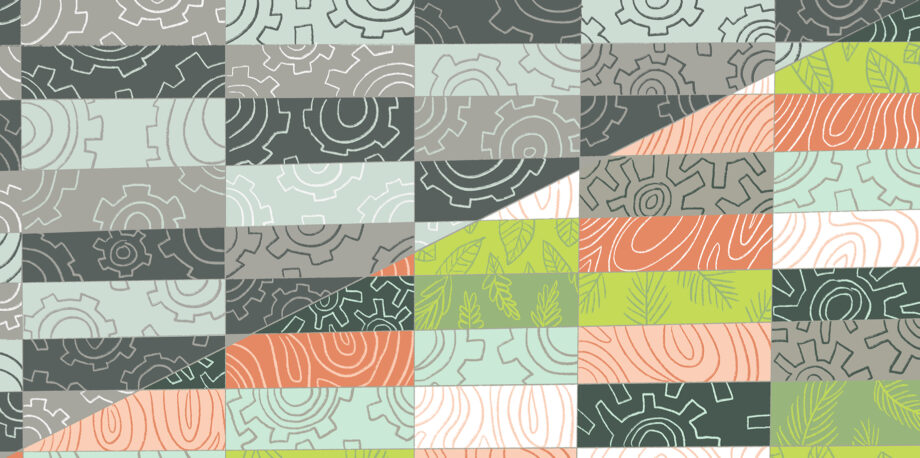August 6, 2020 — As we move into the second half of 2020, it’s clear that we are facing a convergence of troubles of unprecedented proportion. Disruption of ecosystems has led to a global pandemic.
Climate change, chemical pollution and the sixth mass extinction are posing other Anthropocene-related threats. It’s more obvious than ever how connected economies, health, environments and humanity are across the world. The unprecedented level of social disruption and economic shock has called for broad and global thinking, new strategies, and holistic indicators of human progress and resilience.
How did we get here? By basing our decisions on a short-sighted measure of human well-being. Gross Domestic Product (GDP), which is conventionally used to measure economic growth and well-being, fails to account for the contributions of natural ecosystems. It treats the environment as a luxury good rather than an asset that generates benefits that can be measured in monetary terms (and, of course, as the bedrock upon which everything can exist). As a result, we don’t give the environment sufficient weight in our decisions — and the consequences of our decisions come back to haunt us in the form of disease, political instability, economic insecurity and more.
How can we get to a better place? Through something called “inclusive wealth accounting” — a measure of true well-being, not just for ourselves, but for future generations. Inclusive wealth refers to the sum of social worth of manufactured capital (like building and machines), human capital (like health and skills) and natural capital (like biodiversity and ecosystem services). In short, it is a more inclusive way of accounting for the various elements that contribute to sustainability and human well-being.
Holistic Assessment
A GDP-based approach to measuring well-being focuses on produced or manufactured capital. It pays less attention to natural capital — goods and services such as water, air, soil, biodiversity and scenic beauty that also benefit society. Even if the value of some ecosystem services is embedded in measures of GDP, many are often ignored and unaccounted for.

Inclusive wealth refers to the sum of social worth of manufactured capital (like building and machines), human capital (like health and skills) and natural capital (like biodiversity and ecosystem services). Image courtesy of UNEP
The Inclusive Wealth Index (IWI), first proposed in 2012 by the United Nations Environment Programme (UNEP) and others and guided by legendary environmental economist Sir Partha Dasgupta of Cambridge, on the other hand, includes a holistic assessment not only of produced or manufactured capital, but also human capital and natural capital. It considers not only traditional kinds of wealth but also less tangible ones — such as skill sets, health care and environmental assets — that form the backbone of human progress and ultimately set the parameters for sustainable development.
A country’s inclusive wealth (IW) is the value of its natural capital, human capital and produced capital. By factoring in all three forms of capital, the IWI allows us to more accurately characterize the overall change to well-being. For example, when trees and biodiversity-supporting habitat are destroyed to build a school or hospital, natural capital decreases but human capital increases. This is very important for decision makers to know and critical for guiding efforts to enhance true sustainability.
Call to Action
Just as businesses do asset accounting, nations should do inclusive wealth accounting. And this accounting should include biodiversity and ecosystem health and resilience, which require investment to maintain and preserve. Because GDP does not factor in the benefits of natural capital, it doesn’t incentivize the actions that are needed to protect biodiversity and the services it provides — including reducing the risk of pandemic. To provide such protection requires accounting of all kinds of assets, especially natural capital. As the Resolution of United Nations Environment Assembly (UNEA) puts it, “natural capital and natural resource valuation and accounting mechanisms can help countries to assess and appreciate the worth and full value of their natural capital and to monitor environmental degradation.” Inclusive wealth accounting can encourage accountability and allow countries to monitor progress toward conservation goals.
The Dasgupta Review for the UK’s Treasury has already started voicing the need for inclusive wealth accounting to keep track of change of natural assets and the emerging trade-offs.
The IWI was not developed with the intention of replacing GDP as an indicator of progress. Indeed, the UNEP-led Inclusive Wealth reports show that it is possible to achieve per capita growth in GDP and inclusive wealth simultaneously.
The Inclusive Wealth Report 2018 estimates the inclusive wealth per capita over the period 1992–2014 in 140 countries. In spite of considerable data limitations, it found that on average natural capital declined. The inclusive wealth per capita (natural, produced and human) rose, but at a slower rate than that of the GDP per capita. This does not bode well for sustainability, because it means that part of the gain in GDP is coming at the expense of natural and human capital.
The Sustainable Development Goals (SDGs) require nations to strike a balance across various types of capitals — produced, human and natural. GDP per capita is inadequate for the task. The notion of inclusive wealth formalizes a way that balance can be struck. If the SDGs are themselves to be sustainable, nations must provide estimates of changes of inclusive wealth per head.
The progress report on the SDGs suggests that, with just 10 years left to achieve them, we are lagging on almost every goal. We have an opportunity to fix this problem by adopting a credible and well-rounded indicator for true sustainability. Now, more than ever, we need to use the IWI as our measure of well-being.
Editor’s note: The views expressed here are those of the author and not necessarily of Ensia or UNEP. We present them to further discussion around important topics. We encourage you to respond with a comment below, following our commenting guidelines, which can be found on this page. In addition, you might consider submitting a Voices piece of your own. See Ensia’s Contact page for submission guidelines.
Related Posts
Ensia shares solutions-focused stories free of charge through our online magazine and partner media. That means audiences around the world have ready access to stories that can — and do — help them shape a better future. If you value our work, please show your support today.
Yes, I'll support Ensia!




